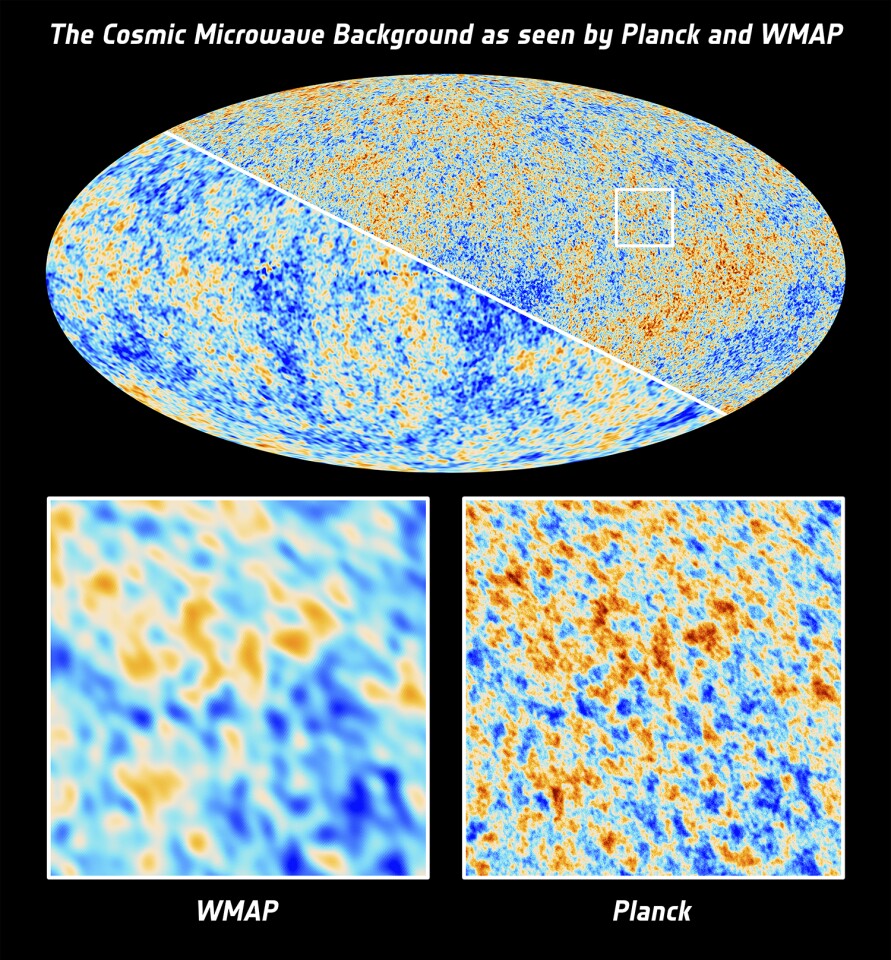A new image acquired by the European Space Agency's (ESA) Planck space telescope provides an unprecedented view of the oldest light in the Universe. The image represents the most detailed mapping of cosmic microwave background (CMB) ever created and both solidifies and questions our current understanding of the Universe.
The light seen in the image was imprinted on the sky when the Universe was just 380,000 years old, at a time when it was a hot, dense mass of interacting protons, electrons and photons. The light itself has now stretched as the Universe has expanded and cooled from a temperature of around 2,700ºC (4,892°F) to form microwave wavelengths that reside at just 2.7 degrees above absolute zero (defined as 0 Kelvin/−273.15°C/−459.67°F).
The initial expansion period of the Universe, known as inflation, lasted just 10-32 seconds (0.00000000000000000000000000000001 seconds), following which the Universe has expanded by a factor of around 1030.
The CMB image, which captures the leftover radiation from the Big Bang, shows minute fluctuations in temperature that signify slight variations in the density of the early Universe. These differences in density represent the seeds of the Universe, detailing the blueprint for the stars and galaxies we see today.

The Planck image is the highest resolution and most detailed CMB ever created, and will allow scientists to map the composition and evolution of the Universe with greater accuracy than ever before. It provides more accurate values for the ingredients of the Universe, with normal matter making up just 4.9 percent of mass/energy density and dark matter taking up a larger than expected 26.8 percent. Dark energy, the force that is thought to be responsible for expansion, accounts for slightly less than previously thought, at around 69 percent.
The data also suggests that the cosmos is slightly older than scientists had previously calculated, now putting its age at 13.82 billion years.
Broadly speaking, the findings act as a confirmation for the current standard model of cosmology, a theory that postulates that the fluctuations seen in the CMB occurred immediately after the Big Bang, and were stretched to cosmologically large scales during the period of inflation.
However, though the new image does go some way to confirming our understanding of the Universe, it also gives rise to some new questions. The unprecedented level of detail in the map has revealed a number of anomalies that do not fit with our current understanding of physics.

Prominent among these is the inconsistency between the temperature fluctuations recorded at large angular sites compared to smaller scale structures, and those predicted by the standard model. A degree of asymmetry between the average temperatures in the opposite hemispheres of the sky was also observed.
ESA's Director General Jean-Jacques Dordain commented on this, stating that “the extraordinary quality of Planck's portrait of the infant Universe allows us to peel back its layers to the very foundations, revealing that our blueprint of the cosmos is far from complete.”
Be sure to check out the gallery to see the original microwave image taken by Planck, and scroll down to see a video showing the stages involved in the extraction of the CMB image from it.
Source: ESA










